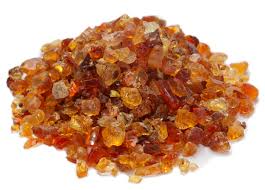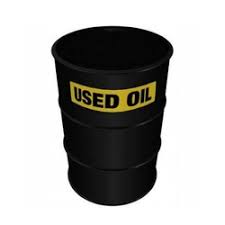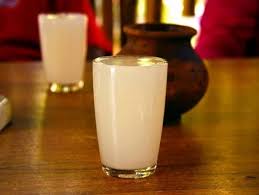Catfish Farming, Processing (Smoking) and Packaging in Nigeria; The Feasibility Report.

Nigerian agriculture is characterized by considerable regional and crop diversity. Analysis of this sector, particularly the food sub-sector, is fraught with serious data problems. However, the available statistics provide a broad overview of development in agriculture upon which we can make some broad generalizations about its role in economic development and structural change in Nigeria.
In the 1960s, the agricultural sector was the most important in terms of contributions to domestic production, employment and foreign exchange earnings. The situation remained almost the same three decades later with the exception that it is no longer the principal foreign exchange earner, a role now being played by oil.
The sector remained stagnant during the oil boom decade of the 1970s, and this accounted largely for the declining share of its contributions. The trend in the share of agriculture in the GDP shows a substantial variation and long-term decline from 60% in the early 1960s through 48.8% in the 1970s and 22.2% in the 1980s. Unstable and often inappropriate economic policies (of pricing, trade and exchange rate), the relative neglect of the sector and the negative impact of oil boom were also important factors responsible for the decline in its contributions.
On its diversity, Nigerian agriculture features tree and food crops, forestry, livestock and fisheries. In 1993 at 1984 constant factor cost, crops (the major source of food) accounted for about 30% of the Gross Domestic Products (GDP), livestock about 5%, forestry and wildlife about 1.3% and fisheries accounted 1.2%.
Fish farming consists of the nursery and the grow-out pond operation. The nursery involves the inducement of the female fish to lay eggs, which are then fertilized, incubated and hatched. The hatched fish are known as fries. These fries are then nurtured fro between three and four weeks into fingerlings, mini juveniles and juveniles which is the size suitable for use in the fish grow-out operation.
The fingerlings, mini juveniles and juveniles can then be nurtured for between four to five months into grow-out or table size fish suitable for sale and consumption.
The following factors is key in setting up a catfish farm in Nigeria land, access to water and drainage facility. It is important that the investor selects the best pond system to adopt namely re-circulatory system, earthen pond or concrete/plastic pond or both.
The largest operating cost is feed. There are various types of catfish feeds. The type being used at any particular time is a function of size of fish being fed, whether the fish are feeding at the surface or in the water column, and if an antibiotic is incorporated.
African catfish usually takes an average of 5 months to reach table size. At this age, they usually have attained an average weight of 1kg. The weight attained by catfish after 5 months is however variable depending on a number of factors that may include, quality of fingerlings used, quality of feeds, water management quality, absence of disease, stocking density among others. It is not uncommon to have fish weigh up to 1.5kg after five months.
Fish is a perishable item. It requires adequate preservation to keep long. It is usual for fish to be preserve under frozen condition but the current irregular supply of electricity is a major challenge even though the power supply situation has recently improved considerably.
Apart from freezing or low temperature preservation, another form of preservation that has saved fish farmers, fish merchants/sellers etc from losses is smoking. The demand for fish and fish products is increasing daily in Nigeria. This has resulted to increased fish production activities to meet the local demand.
This report seeks to examine the financial viability of engaging in catfish farming and smoking business in Nigeria.
The capacity of the proposed farm is thirty-six thousand (36,000) juveniles per production cycle of about five- six months to reach 1.5 kg table size with mortality rate of two percent (2%). After smoking we expect the weight to be around one (1) kg or more.
The farm would have two production cycle in a year. The production capacity of the kiln would be three hundred (300) kg per day and it would operate at eighty percent (80%) of the installed capacity.
Table of Contents
EXECUTIVE SUMMARY 1.0 Business Overview 1.1 Description of the Business 1.2 Vision and Mission Statement 1.3 Business Objective 1.4 Critical Success Factor of the Business 1.5 Current Status of Business 1.6 Description of the Business Industry 1.7 Contribution to Local and National Economy 2. Marketing Plan 2.1 Description of product 2.2 Product Packaging and delivery 2.3 The Opportunity 2.4 Pricing Strategy 2.5 Target Market 2.6 Distribution and Delivery Strategy 2.7 Promotional Strategy 2.8 Competition 3. Production Plan and Management Practices 3.1 Description of the Location 3.2 Pond Designs and Types 3.3 Water Quality 3.4 Fingerlings 3.5 Sorting 3.6 Feeding, Practices and Feed Preservation 3.7 Raw Materials 3.8 Production Equipment 3.9 Production Process 3.10 Production Cost 3.11 Stock Control Process 3.12 Pre-Operating activities and expenses 3.12.1 Operating Activities and Expenses 3.13 Project Implementation Schedule 4.0 Organizational and Management Plan 4.1 Ownership of the business 4.2 Profile of the promoters 4.3 Key Management Staff 4.3.2 Management Support Units 4.4 Details of salary schedule 5. Financial Plan 5.1 Financial Assumption 5.2 Start – Up Capital Estimation 5.3 Source of Capital 5.4 Security of Loan 5.5 Loan Repayment Plan 5.6. Profit and Loss Account 5.7 Cash Flow Analysis 5.8 Viability Analysis 6.0 Business Risk and mitigation factor 6.1 Business Risks 6.2 SWOT Analysis
Project Specification:
Additional Info
Get this Report
Direct bank transfer
To order the report, Please do pay the sum of ₦50,000 into
Account Name : Foraminifera Market Research Ltd
Account Number : 274 20 569 37
Account Name : Foraminifera Market Research Ltd
Account Number : 101 76 603 95
Account Name : Foraminifera Ventures
Account Number : 011 66 066 32
Make your payment directly into our bank account. Please use your Order ID as the payment reference. Your order will not be shipped until the funds have cleared in our account.
Instructions
After payment call us on 01 -29 52 413 / 08033782777 or email us at foraminiferamarketresearch@yahoo.com with the payment details. After payment confirmation, the soft copy of the report would be sent to you within 24 hours.



